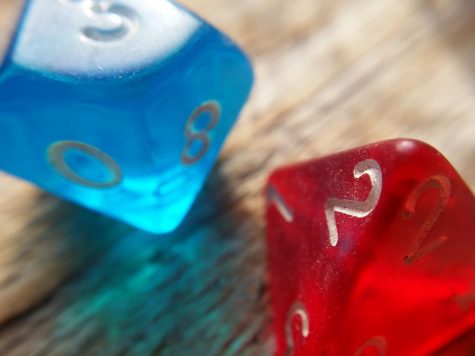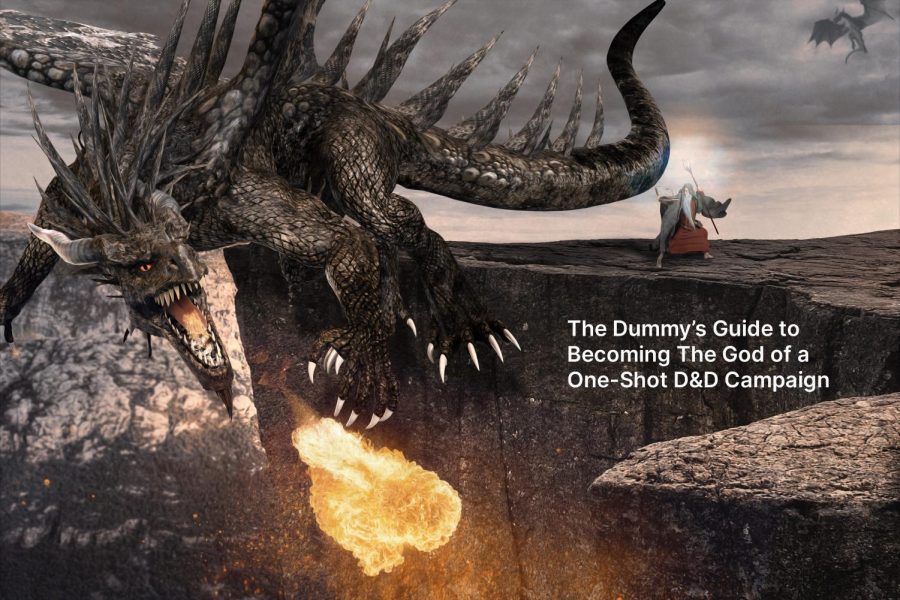The Dummy’s Guide to a D&D One-Shot
A quick guide on how to run a short adventure with D&D fifth edition
The person who is essentially the “god” of this game is the dungeon master. This article covers the basic knowledge of D&D fifth edition and tips on how to create a one-shot campaign. While most campaigns can take weeks to plan, this guide can help you to start one up in minutes. It would not be easy, but if it is done right, it will be a fun night.
Chapter 1: Setting Up
While you are writing up the storyline and the ultimate quest for your players, it would be wise to ask them to start creating their characters. Tools such as Levi Blodgett’s character generator or Walter Kammerer’s “Fifth Edition Character Sheet” on both Android and Apple can help create one-shot characters. If you want the original paper and pen experience, the sheets are available online.

Everyone in the game, including the DM, should have a set of dice. D&D’s dice are named after the number of sides they have, such as the d4 which has four numbered sides, and the d6, which has six numbered sides, and so on. A dice set contains one d4, one d6, one d8, two d10, one d12, and one d20. If a dice set is not available, try the app store or search for a dice-rolling program on the internet.
The party should start with level one characters with basic combat skills. Players can choose their class based on their preferred fighting styles. Some characters wield mighty weapons, some sing songs to assist party members and some blast spells from afar.
For a short session or with new players, it is best to use a pre-made character or let the character builder programs do the work. Looking up each skill, class feature, and race trait can take longer than the one-shot campaign itself.
Here is a summary of what each number on their sheets means. Every character has six ability scores: strength, dexterity, constitution, intelligence, wisdom, and charisma. Players should know that any ability score below nine will have a negative modifier and any score 12 or above will have a positive modifier. For example, a character who has a strength ability score of nine is trying to lift a boulder. The player rolled a 13. They would have succeeded, but the -1 modifier took their roll down to 12, which caused them to fail instead. The party will have to think of alternatives.
Besides abilities and spells, players also have many skills, such as stealth and animal handling. Each of these skills has the opportunity to gain proficiency based on the players’ class and background that gives modifiers. For example, if a character with a +2 modifier in dexterity from abilities score also plays a “rogue” class or picks the “criminal” background, they can choose to add another +2 point bonus to stealth. It is important as a DM to remind players that proficiencies cannot be changed once chosen, so chosen wisely.
The reason that proficiencies matter is because the DM can ask for a skill check when players use their skills. For example, if a character wants to seduce an NPC, the DM can ask for either a “charisma check” or a “performance check.”
To make sure everyone is on the same page, here’s a cheat sheet.
Chapter 2: The Adventure Begins
Now that you have gotten through the difficult part, it is time to plop your characters down into the world they will be exploring. One of the best things D&D offers to its players is freedom. Almost anything is possible. For a one-shot campaign, one simple main quest is enough. For example, it can be a murder mystery at a massive mansion party that everyone got an invite to, or an alien broke out of containment and the ship’s crew had to either capture it or kill it.
You are not limited to actual dungeons and dragons.
As a DM, you should include non-playable-characters in the campaign. While the interactions between players are great, it is important to interact with NPCs too. For example, a talking bush can tell the party that they may only pass the bridge if they sing a song. Have these mini task givers to go along with the main quest’s enemies makes the campaign more versatile and fun. With one-shot, the goal of the adventure should not be complicated. Such as defeating a doomsday cult or finding an extremely rare stone through a series of trials.
There is a last bit of advice. Start setting up as early as you can, have your notes ready, and do not stress! Dungeons & Dragons is an open-world game and your players would not always follow the linear path you imagined. Be flexible and let them carve their paths! Let them bring the cute NPC along that they got very attached to! It’ll be fun for them and you get to actively play. Play with voices and act out the story. It’s no fun if the DM says, “oh no…the beast is coming. Someone help,” with the enthusiasm of a dead fish.
Dungeons & Dragons campaigns are all about letting your imagination run wild while having fun. Forget all the rules and troubles in reality. Play freely in the imaginary world. Enjoy the power that comes with writing the narrative. As long as you are enjoying this game, your party will too.



